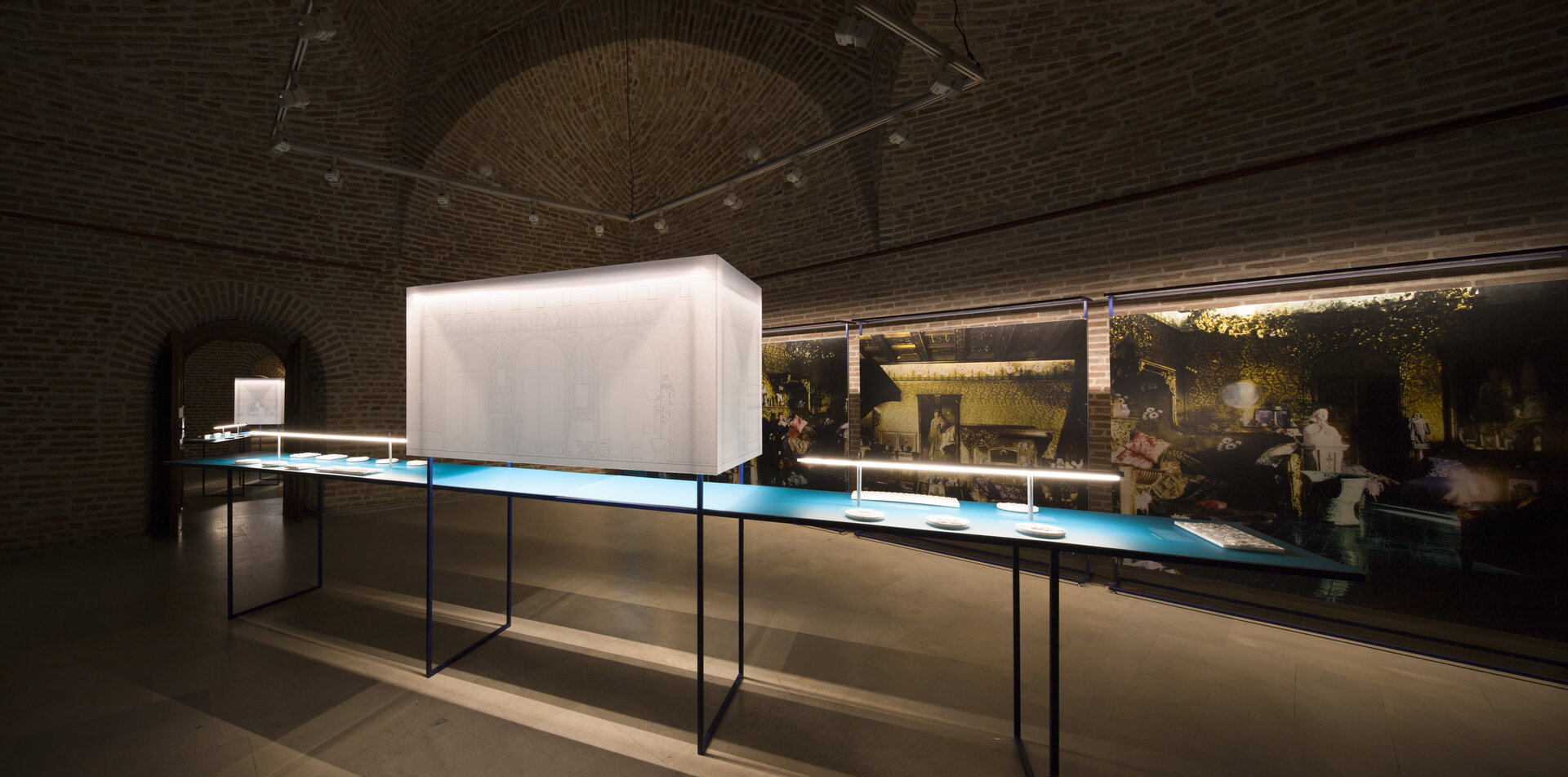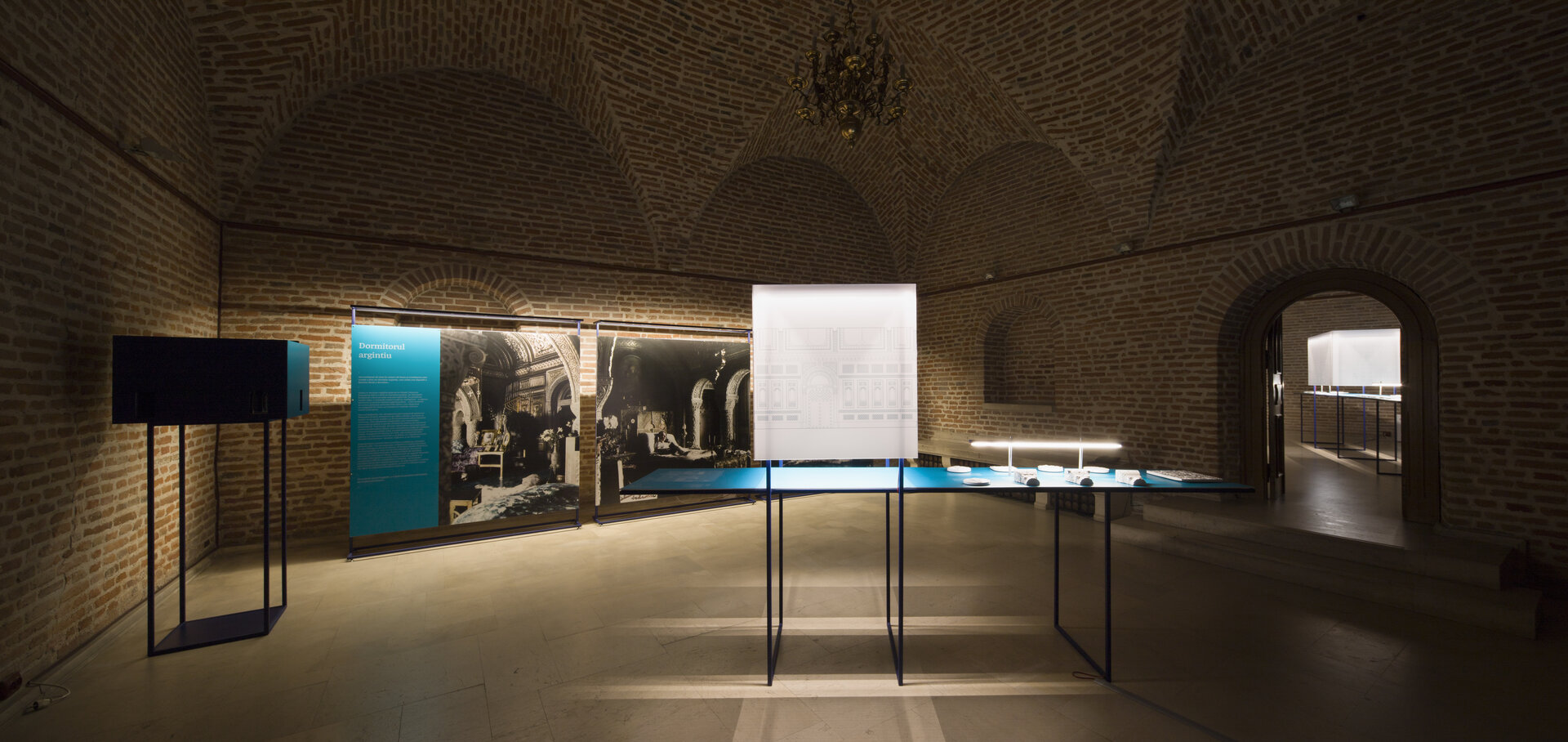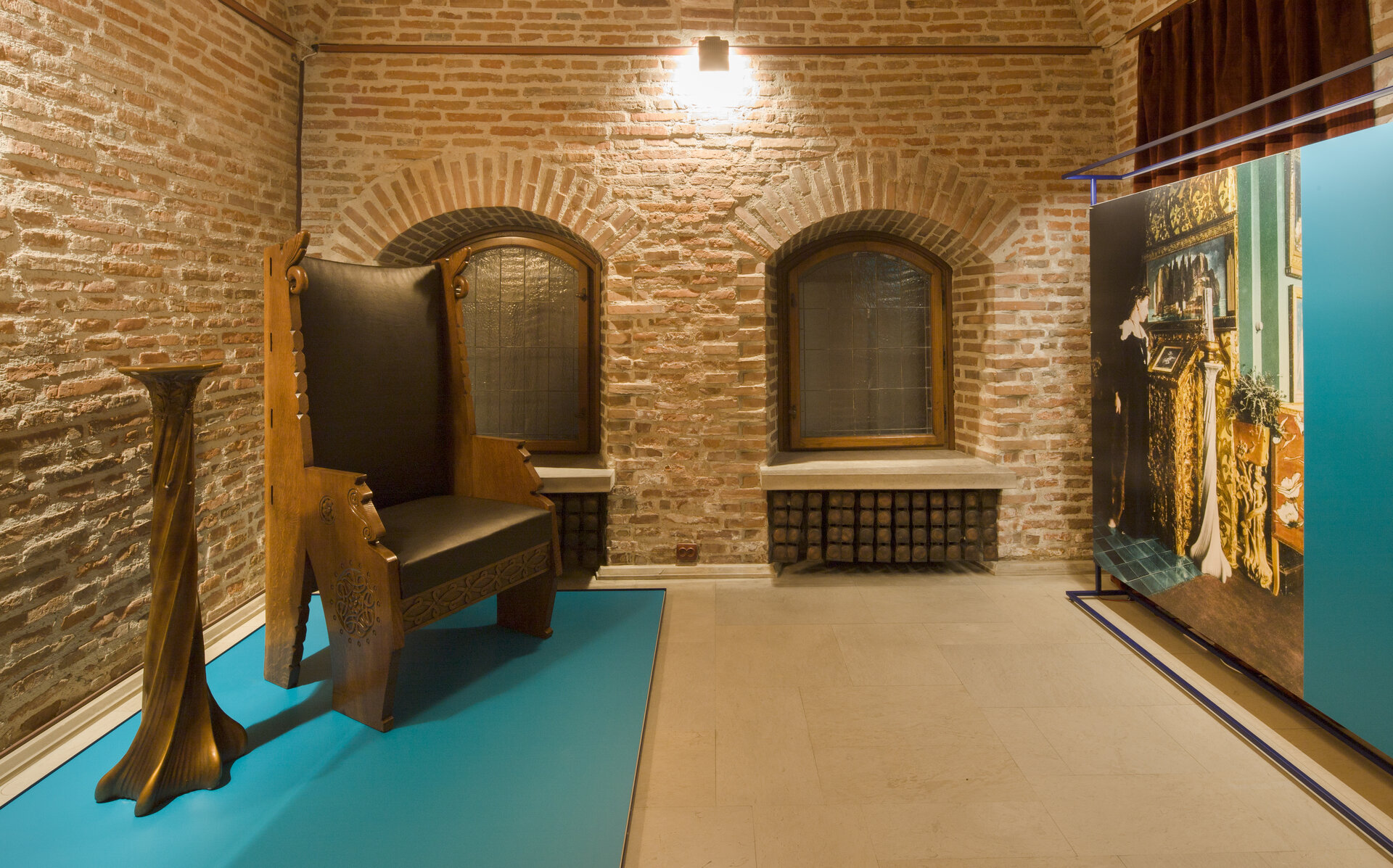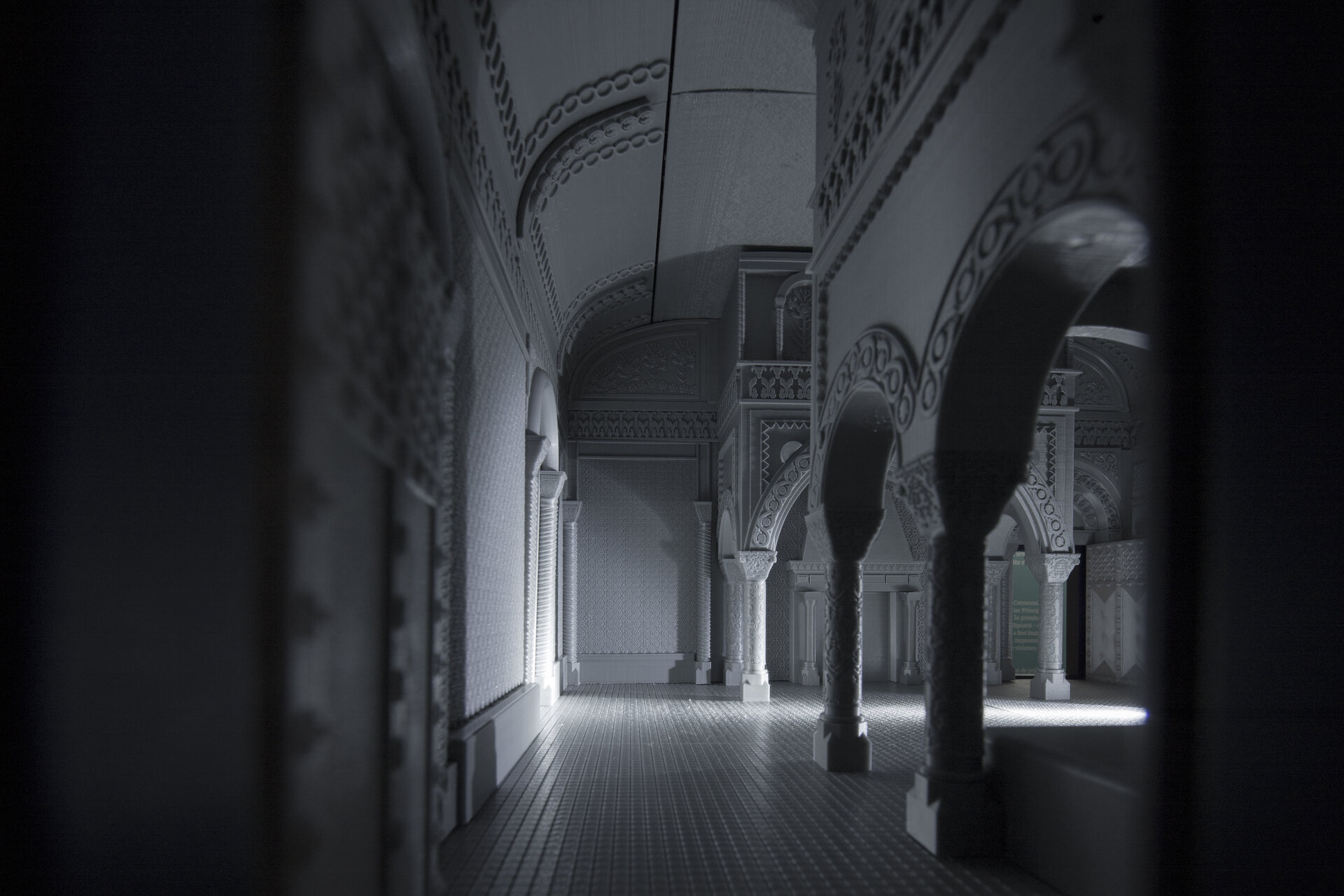
- Nomination for the “Interior Space Architecture / Exhibition and Scenography Design” section
Reflections of Queen Mary in Cotroceni Palace
Authors’ Comment
An exhibition about two spaces within the Cotroceni Palace - the Golden Hall and the Silver Bedroom, as they were almost 100 years ago, which is located in the exhibition spaces of the Palace, in the present day. Although both the Hall and the Bedroom continue to physically exist as actual spaces inside the Palace, their current appearance hardly gives a glimpse of what the interior design projects carried out by the young Marie looked like, at the beginning of the century.
Partly as a result of later remodelling done by the Queen herself, and partly as a result of changes occuring during the communist period, the Hall and Bedroom have been completely transformed, leaving behind very little evidence of their former appearance. A few descriptive passages written in diaries, several black and white photographs, pieces of furniture, ceramic ornaments, picture frames, a glazed blue floor tile - these were some of the puzzle pieces at hand.
Old photograph interpretation formed the basis of both the exhibition and the reconstruction of the original design project – firstly, in a two-dimensional manner : drawing plans, sections, wall elevations, details of furniture or interior decoration, faithfully-reproduced besoreliefs, floral motifs, details of capitals. The next step was three-dimensional transposition: 3D prints with 2 models of the spaces and 25 decorative details.
The Hall and Bedroom reconstructions are scaled down to dollhouse-size and hidden inside opaque boxes, pierced by only a few perforations. Still, visitors may easily "access" them with the help of a flashlight and a dose of curiosity for exploring two spaces that, as depicted in old phorographs, reveal themselves in dim light and strong contrasts. Details found in both models and photographs can also be explored tactilely on top of the exhibition tables, where recurring symbols and motifs found in the spaces designed by Queen Marie are explained.
Furthermore, through combining photographic resources with descriptive passages or material samples, the colorization of the photos has been carried out in such a way as to depict the images as close to reality as possible - a type of chromatic archaeology, where the exhibit is taken out of the album and 'put under the magnifying glass', oversized, in order to suggest the scale of the original rooms.
In the end, the result was still a fragmented image, spread across the five medieval spaces of the Cotroceni Palace. Old pieces were mixed and matched with new ones, old armchairs together with 3D prints and ceramic tiles alongside brightly-lit 'blueprints'. The result is a collection of facets of two atypical spaces within the architectural history of the Royal Palace, of which Marie herself said that "although is not actually mine, Cotroceni has been my principal home. I have loved it and modelled it, year by year, as much as I could, according to my taste".
- After Sculpture - Sculpture After
- RDW 2022 - Courtyard Design of Combinatul Fondului Plastic - Pretty Heap
- Pastoral Calendar
- Reflections of Queen Mary in Cotroceni Palace
- All balloons up high! - Architect’s Stand
- PORC Rap-Up Store
- VL_SD
- Isolation in a Series of Liminal States 2023
- The Little Magenta Rinding Hood
- Be Bionic! Experimental Bionic Architecture
- Volume of a sleep
- BoxIT !
- 1907. We ask for land
- Diploma Show 2023
- Inventory of the Week
- Nostalgia with a twist
- CORPUS CONFECTUS
- Victor Brauner - Inventions and magic
- Individual All-around
- Romanian Design Week 2023
- Innovation




















